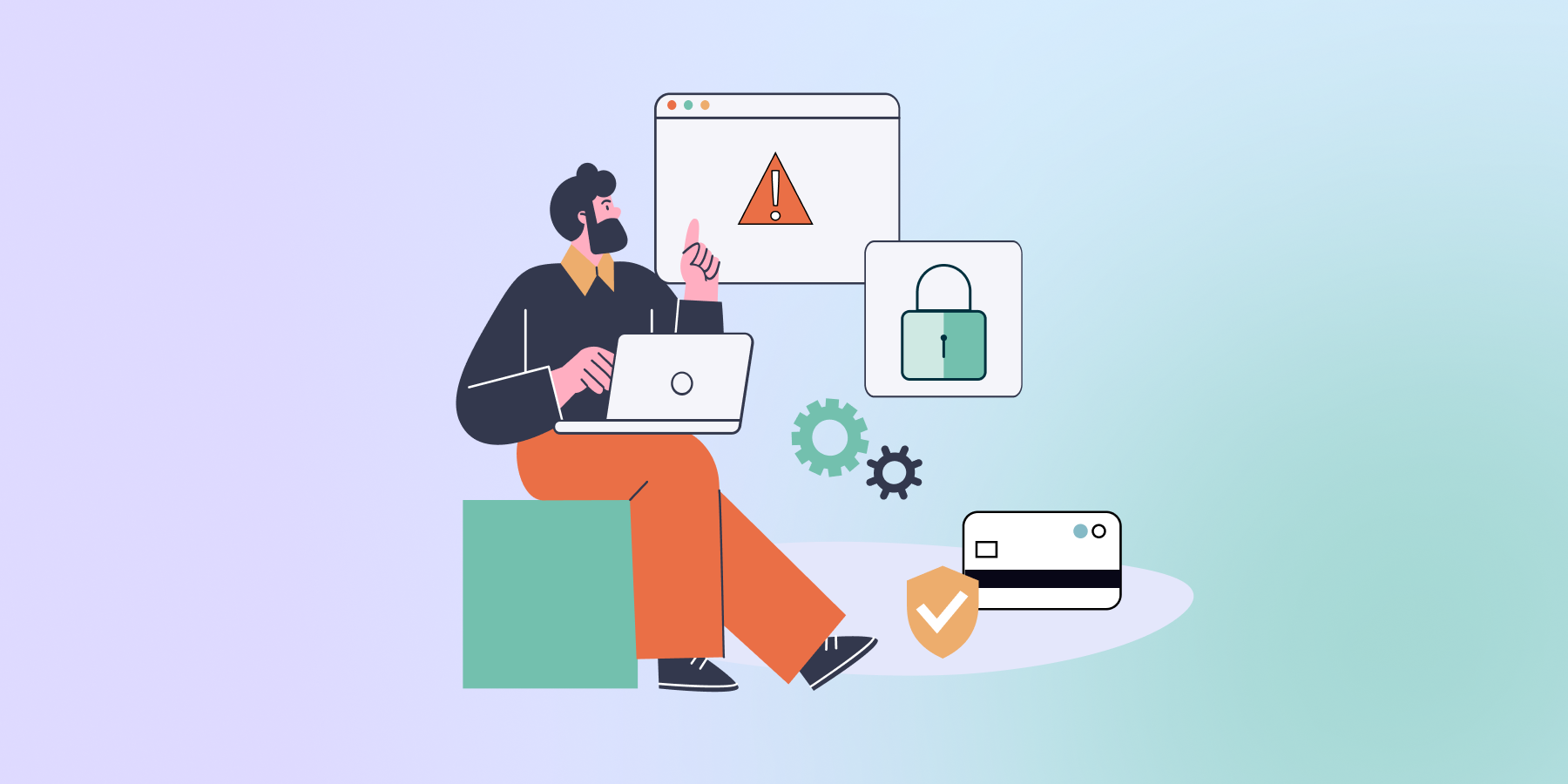As technology floods into the world of education, schools are increasingly facing an alarming problem — a ransomware attack. In the digital age, priceless school data is becoming one of the easiest targets for hackers.
Now more than ever, educational institutions must reach advanced solutions to prevent financial, operational, and reputational costs caused by cyber criminals.
Read on to find out:
- What is the current state of ransomware attacks in schools?
- How do cyber attacks affect educational institutions?
- What are common cybersecurity vulnerabilities, and how can you reduce these risks?
Real-Life Ransomware Attacks Against Schools
September 5, 2024, London, UK. Charles Darwin High School sends more than a thousand students home for three days after discovering a ransomware incident. This happens just at the start of the new year, disabling school operations for several days.
To recover the system, the school has cleansed all staff devices and, for security, deactivated all students’ Microsoft 365 accounts. In the meantime, teachers must adjust their lesson plans to the new situation.
September 27, 2024, Richmond, US. Richmond Community Schools in Indiana announces that student and staff data housed in the school app was breached due to a ransomware attack.
While security agencies are investigating the case, the school district, working to restore all systems, decided to shut down the entire service network. Next week, the school starts with a two-hour delay, morning preschool classes have been canceled, and lessons need to be modified to low-tech plans.
The State of Ransomware in Educational Institutions
According to The State of Ransomware in Education 2024 report, published in July 2024, nearly 70% of universities have paid above the original ransom demand. The median ransom paid was $6.6M in lower education institutions and $4.4M in higher education.
The most common cause of ransomware incidents in education is exploited vulnerabilities (44% in lower education and 42% in higher education). The second most frequent source of incidents is malicious emails in K12 and compromised credentials in universities.
The report indicates that the main goal of cybercriminals was to compromise school backups. Most of these attempts were successful, resulting in higher ransom demands, ransom payment rates, and recovery costs for schools.
As in previous years, in most cases, cyber hackers could encrypt the data before the attack was stopped. Unfortunately, the number of successful data encryptions in ransomware attacks has increased over the years.
Ransomware Attack Impact on Schools
That’s a fact — the number of cyberattacks in education is growing. Their effects negatively affect not only school technology and security but also cause additional costs.
Due to their diverse nature, the outcome results of cyber incidents are difficult to estimate, but schools must always be prepared for the worst scenarios:
▪️ Sensitive Data Loss
First and foremost, a cyber attack can expose personal data saved on school devices and networks to unauthorized disclosure. Every school stores multiple files containing personally identifiable information about students, school staff, and parents. Their leaking or loss means a significant security risk and affects the school’s credibility and reputation.
▪️ Significant Financial Costs
A successful ransomware attack usually involves enormous additional spending for an educational institution. These can include the costs of recovering lost data and damaged systems, hiring external experts, and dealing with potential legal issues. In addition, education is the industry sector that pays the highest ransoms, along with governmental institutions. The lowest ransoms are paid by IT companies, which are more aware of cybersecurity threats and how to manage them.
▪️ Disrupted Learning Process
Shutting down school networks and devices significantly affects students and teachers using technology in the classroom. Classes must be modified or canceled, which means more work and stress for educators and students. A cyber attack can also hit any part of school life that uses technology: library systems, CCTV, salary and accounting systems, cashless payments, etc. Sometimes, the entire school must be closed for a long time to ensure effective data retention and recovery.
Auditing Your School Systems to Protect Data Privacy
Attention, danger detected. All hands on deck!
Once a ransomware attack has begun, it’s too late to patch system vulnerabilities. To defend against serious online risks, schools must constantly monitor the current state of cybersecurity and adopt effective prevention tactics. Regular audits in the following four areas will make your digital infrastructure less vulnerable to becoming a target of cyber attacks.
Common Cybersecurity Vulnerabilities in Schools
🚩 Outdated Software
Many educational institutions don’t prioritize updating their software. The reasons can vary — lack of time, insufficient awareness, short funding, or other limited resources. Out-of-date software, used daily to process valuable personal data, is a wide-open door for hackers.
💡 Solution: Book a permanent place for system updates in your school’s annual budget and calendar. Consider introducing highly secure Chromebooks in classrooms that have never suffered from a ransomware attack.
🚩 Ineffective Backups
Maintaining updated, well-protected backups is critical to mitigate cybersecurity threats. If hackers successfully compromise backups, the risk of a higher ransom demand rises. By keeping backups, most schools attacked by cyber criminals avoid paying a ransom to restore encrypted data.
💡 Solution: Choose a trustworthy data storage service (cloud storage is widely recommended) to diversify your backup sources according to the 3:2:1 rule. Schedule automated, regular backups to guarantee the most effective recovery from data loss.
🚩 Lack of Real-time Risk Monitoring
Cybercriminals are constantly searching for the smallest vulnerabilities in school systems. Stay one step ahead of them and detect your weaknesses first. Your proactive attitude to audit online activity in the school domain in real time helps you mitigate many risks before they become targets for bad actors and escalate.
💡 Solution: Employ a robust tool, such as a great duo of GAT+ and GAT Shield for Google Workspace for Education, to monitor all online activity of all your users at all times. Only this can help you notice suspicious online behavior, unauthorized file sharing, and other security gaps that could be an attempt of phishing, malware, or ransomware attack.
🚩 Low Cybersecurity Awareness
Last but not least. Although students and school staff aren’t IT professionals, they are also responsible for cybersecurity when using school networks and devices. Lack of awareness and training often leads to overlooking obvious signs of scams, phishing, and other suspicious activity, making the school more vulnerable.
💡 Solution: Schedule regular cybersecurity training sessions for teachers and students. Children may be keener to learn about tough topics with funny, educational resources like Google’s Interland game or Hack-A-Cat game on Roblox. Remember not to blame anyone if an incident happens, but appreciate everyone’s effort to contribute to the common good and well-being.
Closing Thoughts
Maintaining your school data safe from ransomware attacks isn’t a one-day job but a complex task that requires multiple actions and close cooperation.
School admins must remain updated about recent school cyber attacks, emerging threats, and available security measures. Only regular cybersecurity auditing and continuous improvements will bear fruit for the school. A preventive strategy will safeguard your valuable data from theft or leakage and avoid additional damage.
Book a demo or start a free 15-day trial to gain the ultimate cybersecurity protection and real-time risk monitoring with the trusted Google Workspace for Education management tool.
Read our guide to malware protection for admins and teachers here.
Insights That Matter. In Your Inbox.
Join our newsletter for practical tips on managing, securing, and getting the most out of Google Workspace, designed with Admins and IT teams in mind.





